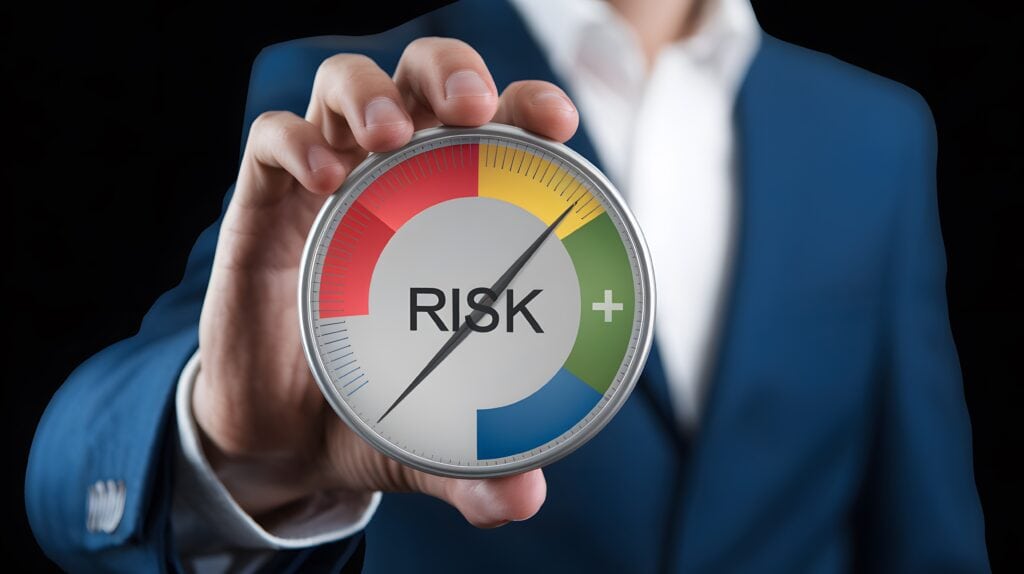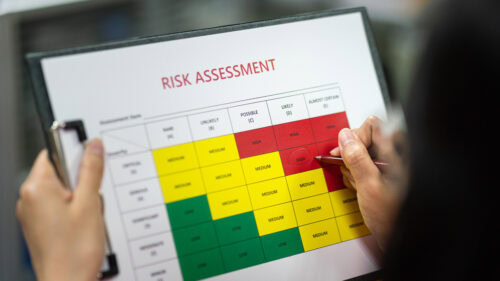Operational Risk Management: Core Principles and Practices

Modern business operations face rising complexity from cyber threats, supply chain issues, and failed internal processes. Each mistake or delay increases risk exposure and disrupts performance. Without a structured system, risks multiply fast and often without warning.
Unexpected breakdowns in internal processes, rising technology risks, and frequent external events have made operational risk management a critical business priority, especially as companies face increased pressure to maintain stability and resilience.
Every organization, regardless of size or industry, now faces growing threats that can disrupt normal business operations, damage reputation, and result in major financial losses. Understanding the operational risk management process helps senior management protect their systems, people, and data.
In this guide, you’ll explore key principles, proven methods, and actionable steps for managing operational risk and building a resilient, responsive organization ready to handle uncertainty.
Understanding the Operational Risk Landscape
Modern business operations face rising complexity from cyber threats, supply chain issues, and failed internal processes. Each mistake or delay increases risk exposure and disrupts performance. Without a structured system, risks multiply fast and often without warning.
Using a clear operational risk management approach helps spot and reduce threats early. A strong risk management process improves decisions, prevents operational failures, and supports business continuity.
What Qualifies as Operational Risk?
Operational risk stems from daily failures caused by people, systems, or outside events. Common examples include human mistakes, fraud, system crashes, or broken processes.
Banks often face internal and external fraud, while healthcare deals with compliance risk and tech outages. In manufacturing, poor internal controls or sudden external events like natural disasters can halt operations.
Early risk identification and scenario analysis help avoid bigger losses. Tracking operational risk data across teams supports faster, smarter risk decisions that protect the business.
How Does ORM Differ from Enterprise Risk Management?
Operational risk management (ORM) focuses on risks from internal errors, people, and processes. Enterprise risk management (ERM) covers broader risks like market, credit, and strategic threats. ORM takes a tactical approach with direct controls and daily practices.
ERM guides long-term planning and aligns risk with business goals. Both matter. ORM supports execution, while ERM shapes direction. Together, they build a stronger, more resilient risk management framework across the organization.
Core Components of Operational Risk
Operational risk arises from people, processes, technology, and external pressures working together. A strong operational risk management program must cover each area and understand its connections. Ignoring one often increases exposure to another.
Poor training may lead to system errors, or weak processes may slow crisis response. A balanced, connected approach helps mitigate operational risks and builds long-term stability across business functions.
People and Process Risks
People drive operations, but also introduce risk. Human error, poor training, and unclear roles often lead to operational failures. Weak processes create confusion.
Improving oversight, setting clear responsibilities, and using real-time performance reporting reduce employee risk and improve execution across daily operations, lowering disruptions and costly mistakes.
Technology and Systems Vulnerability
Outdated systems and poor cybersecurity create major technology risks. System failures, data breaches, and weak integrations harm productivity and expose sensitive data.
Aligning IT plans with the risk mitigation plan, using strong controls, and applying automation helps reduce errors and downtime while supporting the operational risk management strategy.
External and Environmental Factors
Businesses face constant external threats like economic shifts, regulation changes, and disasters. These events can disrupt operations and cause major losses.
Monitoring trends, analyzing risk events, and using scenario planning keep organizations prepared. Proactive external analysis supports fast response and improves resilience across core business operations.
Building an Effective ORM Framework

Strong operational risk management begins with a structured framework. Organizations need a foundation that supports clear risk identification, accurate analysis, and quick response. A solid operational risk management framework includes ownership, tools, procedures, and monitoring.
Without alignment, efforts become reactive. A strong framework improves control, speeds action, and reduces surprises during risk events.
Risk Identification Methods
Finding potential risks early gives teams time to act. Leaders rely on interviews, process maps, and past loss data to uncover threats.
Tools like scenario analysis and self-assessments highlight weak spots. Studying industry risk events, real-time alerts, and internal audits strengthens risk identification across the operational risk management program.
Assessment and Measurement Strategies
Finding potential risks is only the start—teams must assess impact. A structured risk assessment process ranks threats by likelihood and severity.
Tools like scoring models, heat maps, and loss data support analysis. Blending data and expert input helps prioritize issues and improve risk management decisions for high-impact, material risk exposures.
Implementation and Control Mechanisms
Finding potential risks is only useful when followed by action. Teams must apply controls using clear workflows, tested procedures, and policy enforcement.
Strong control systems use access limits, audits, and real-time monitoring. Dashboards improve visibility and ensure fast response. A solid environment supports the full risk management process effectively.
Why Is ORM Critical for Business Success?
Operational risk hits revenue, damages trust, and slows performance. Ignoring it creates exposure and weakens stability.
Strong operational risk management builds agility, protects growth, and reduces loss. Companies that invest in operational risk management initiatives cut downtime, avoid fines, and build trust with clients, regulators, and investors.
Competitive Advantages
Effective operational risk management helps organizations stay ahead by cutting delays, errors, and disruptions. Smoother delivery boosts customer satisfaction and brand strength.
One global bank flagged a system flaw early, avoided a major outage, and saved millions. Daily focus on ORM turns risk into a long-term strategic business edge.
Financial Impact and Value Creation
Effective operational risk management improves financial performance by preventing losses and cutting legal, regulatory, and operational costs. Accurate risk insights enable more sustainable financial forecasting and smarter budgeting.
When benefits outweigh control costs, ROI rises. Strong ORM reduces volatility, boosts investor trust, and justifies continued investment in risk efforts.
Creating a Risk-Aware Culture

Tools alone don’t manage risk—people do. A risk-aware culture ensures operational risk management practices take hold across the organization.
Culture shapes how staff act, speak up, and decide under pressure. Shared values drive consistency. When employees own risk, teams react faster, collaborate better, and reduce blind spots in daily operations.
Leadership’s Role in ORM
Culture starts at the top. Senior management must lead by example—supporting operational risk management goals, owning key risks, and showing visible commitment.
Clear communication, active involvement in risk assessment, and support for controls shape employee behavior. Strong leadership builds trust, sets clear standards, and drives accountability across all levels.
Training and Communication Strategies
Awareness builds through consistency. Ongoing training keeps risk knowledge fresh and useful. Use real examples, workshops, and simulations to teach effective risk control practices.
Open reporting channels, regular updates, and team feedback loops help surface identified risks early. Strong communication embeds risk awareness and ownership into daily decision-making.
Modern ORM Tools and Technologies
Technology plays a critical role in operational risk management today. Digital tools help automate tracking, flag issues early, and support fast, accurate decisions. Without them, risk management practices become slow and reactive.
Strong platforms simplify the operational risk management process, reduce human error, and boost visibility. Choosing the right tools depends on risk needs, industry, and internal capacity.
Digital Solutions for Risk Management
Modern tools offer workflow automation, centralized risk data, real-time alerts, and easy collaboration. Dashboards highlight threats, trends, and key risk indicators across departments. Many tools integrate with audits, vendor systems, and compliance platforms.
Choosing the right solution requires assessing business needs. Involving risk teams and business process owners ensures successful rollout and adoption.
Data Analytics and Reporting
Modern tools offer workflow automation, centralized risk data, real-time alerts, and easy collaboration. Analytics platforms turn raw risk data into insights that support operational risk management ORM. Teams track patterns and monitor changes.
Clear reports help senior management act faster. Dashboards and real-time feeds improve transparency, detect compliance risk, and support accurate risk assessment.
Industry-Specific Applications
Every industry faces unique threats. A one-size-fits-all approach doesn’t work for operational risk. Adapting core practices to each sector ensures more relevant protection and better alignment with the organization’s operations.
Financial Services Focus
Banks and financial institutions face tight banking supervision, strict regulations, and complex credit risk profiles. Errors often result in large fines or losses.
Strong operational risk management programs help reduce fraud risks, maintain compliance, and protect reputation. Internal risk teams focus on collecting risk data, tracking threats, and testing controls to meet global standards.
Manufacturing and Operations
Manufacturing depends on efficiency, safety, and continuity across all processes. Equipment failures, supply chain issues, or breakdowns disrupt output and raise costs.
Strong operational risk management strategies focus on hazard analysis, automation, and forecasting particular risks. Tools like sensors and simulations help reduce downtime, manage vendor risks, and ensure environmental and safety compliance.
Measuring ORM Success

Success in operational risk management requires measurement. Without tracking progress, leaders can’t see what works or where gaps remain. Defining clear metrics shows the impact of controls, tools, and programs over time.
Monitoring results helps justify the budget, support improvements, and guide future planning. Metrics also help compare teams, regions, and business lines to identify weak points and share success strategies.
Key Performance Indicators
Effective KPIs track outcomes that matter. Common indicators include the number of identified risks, response time to risk events, loss amount per incident, and control test results. Others focus on audit findings, incident trends, or business continuity metrics.
Dashboards that combine both leading (predictive) and lagging (historical) indicators give a full view of risk exposure.
Future of Operational Risk Management
Future risk environments will move faster and grow more complex. Remote work, AI adoption, and global instability will introduce new vulnerabilities. Leaders who invest early in flexible frameworks, smart tools, and team development will stay ahead.
Emerging trends include AI-driven risk detection, real-time ESG risk tracking, and expanded third-party risk monitoring. Organizations that embrace innovation and align tech with strategy will respond better and bounce back quicker.
FAQs
What are the four Ps of operational risk?
People, Process, Platform, and Policy. These elements cover staff behavior, workflows, systems, and rules. Together, they shape how risks develop and how fast teams respond.
What are the three pillars of operational risk?
Governance, Framework, and Process. Governance sets direction. Framework provides structure. Process enables daily action. Aligning all three creates consistent risk management across the business.
What are the four C’s of risk management?
Culture, Compliance, Control, and Communication. These areas drive how people act, how rules are followed, how risks are stopped, and how updates get shared. Strong Cs results in effective risk management.
What are the five rules of risk management?
Effective risk management follows five key steps: identify the risk, measure the impact, plan mitigation, assign ownership, and monitor continuously. These steps help teams manage risk quickly and confidently.
Creating Your ORM Action Plan
Every organization needs a roadmap for better operational risk management. Start by assessing current gaps and setting clear goals. Build a strong team, pick the right tools, and create fast feedback loops.
Break the plan into stages: identify, assess, act, and review. Each phase should include roles, timelines, and metrics. Review progress quarterly and adjust as needed. Companies that stay focused and flexible improve faster and build stronger risk defenses over time.
